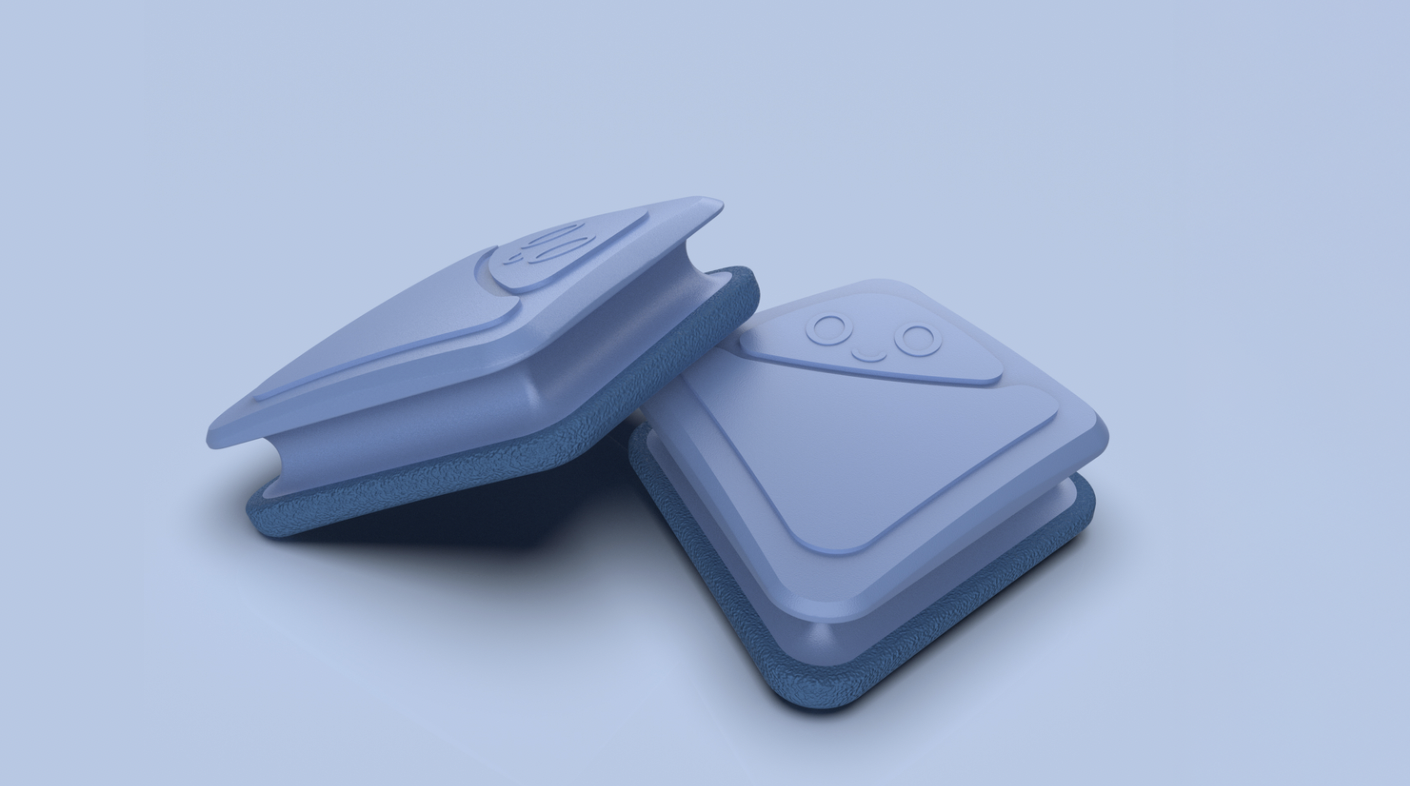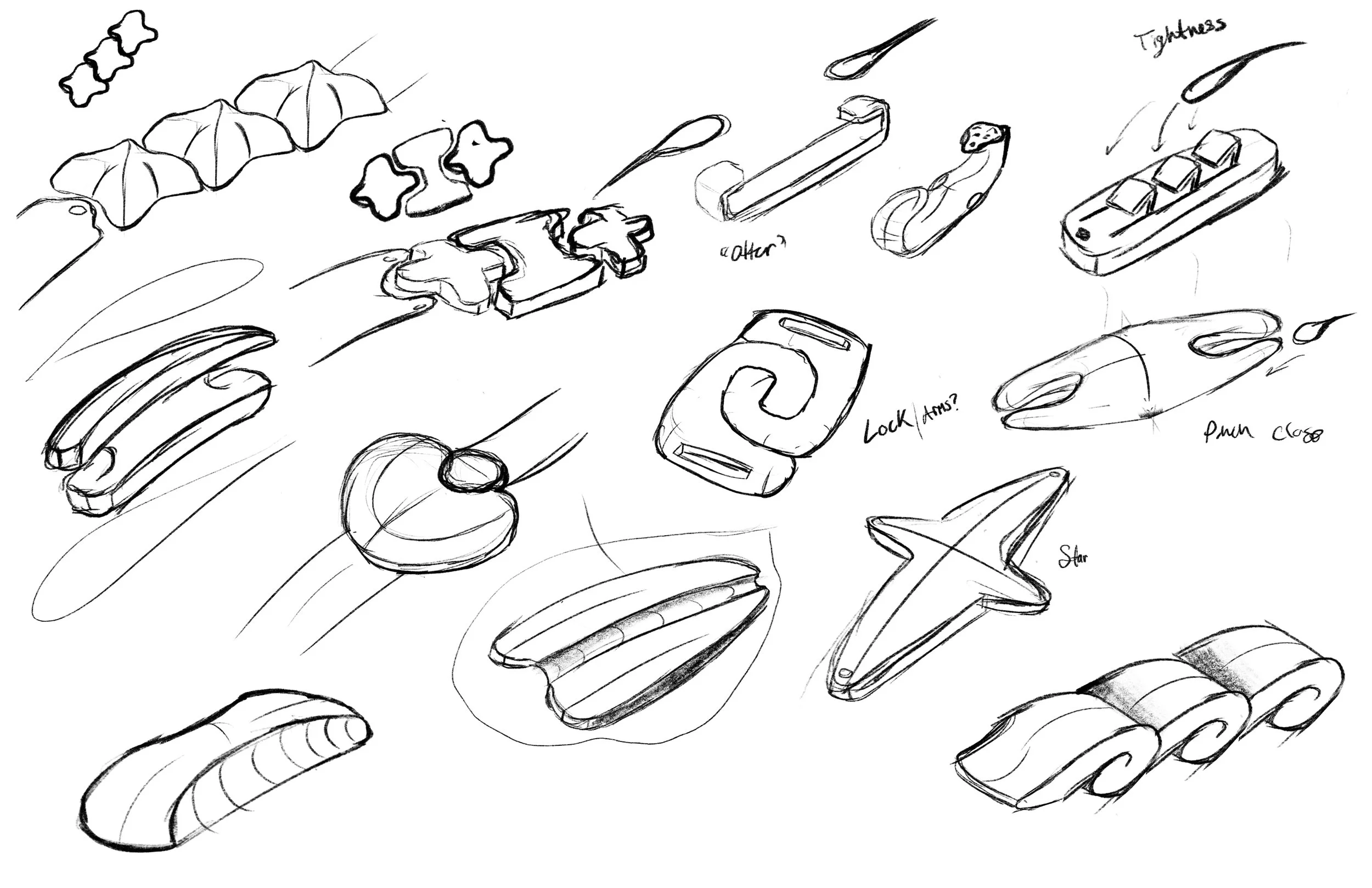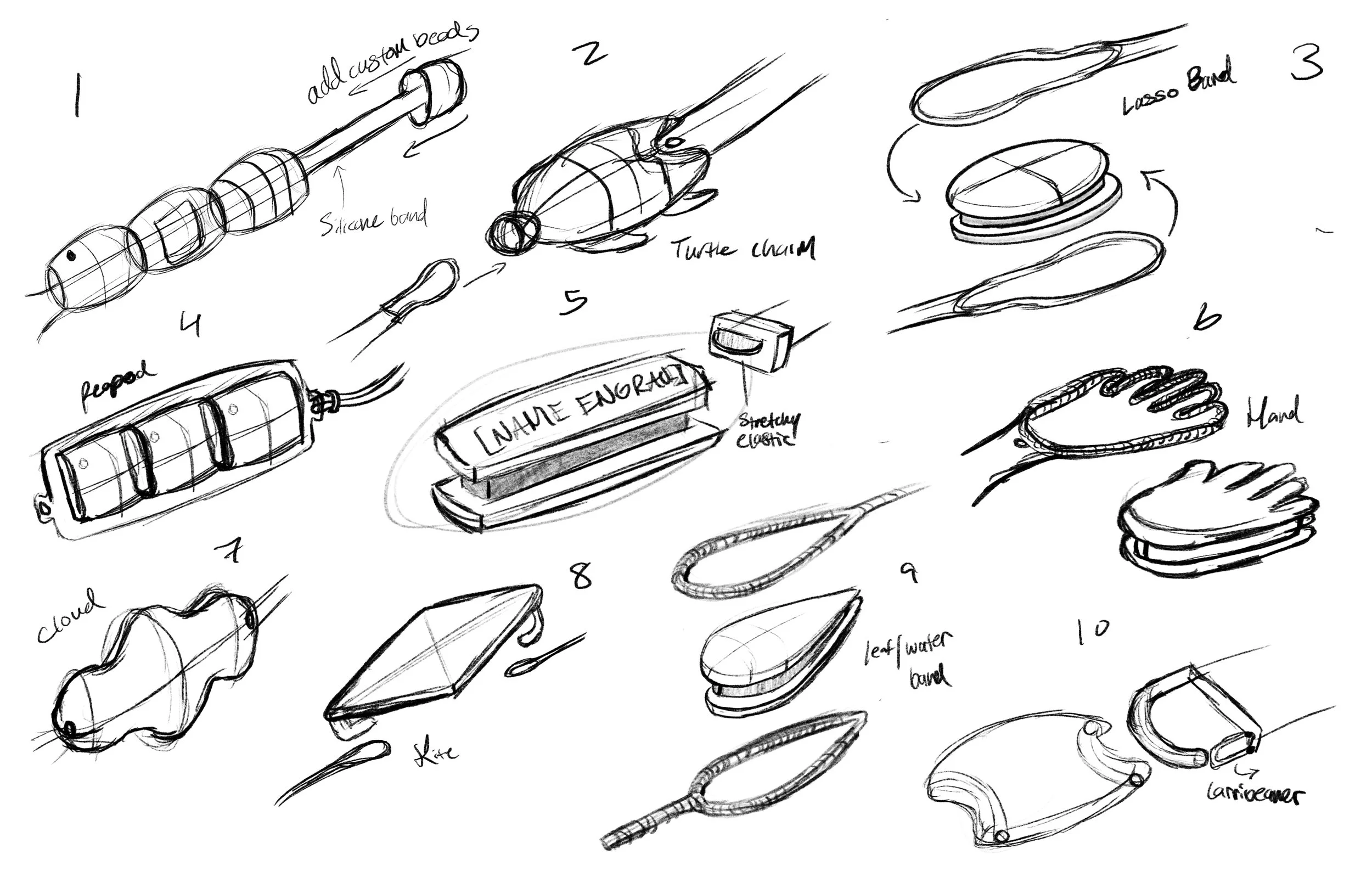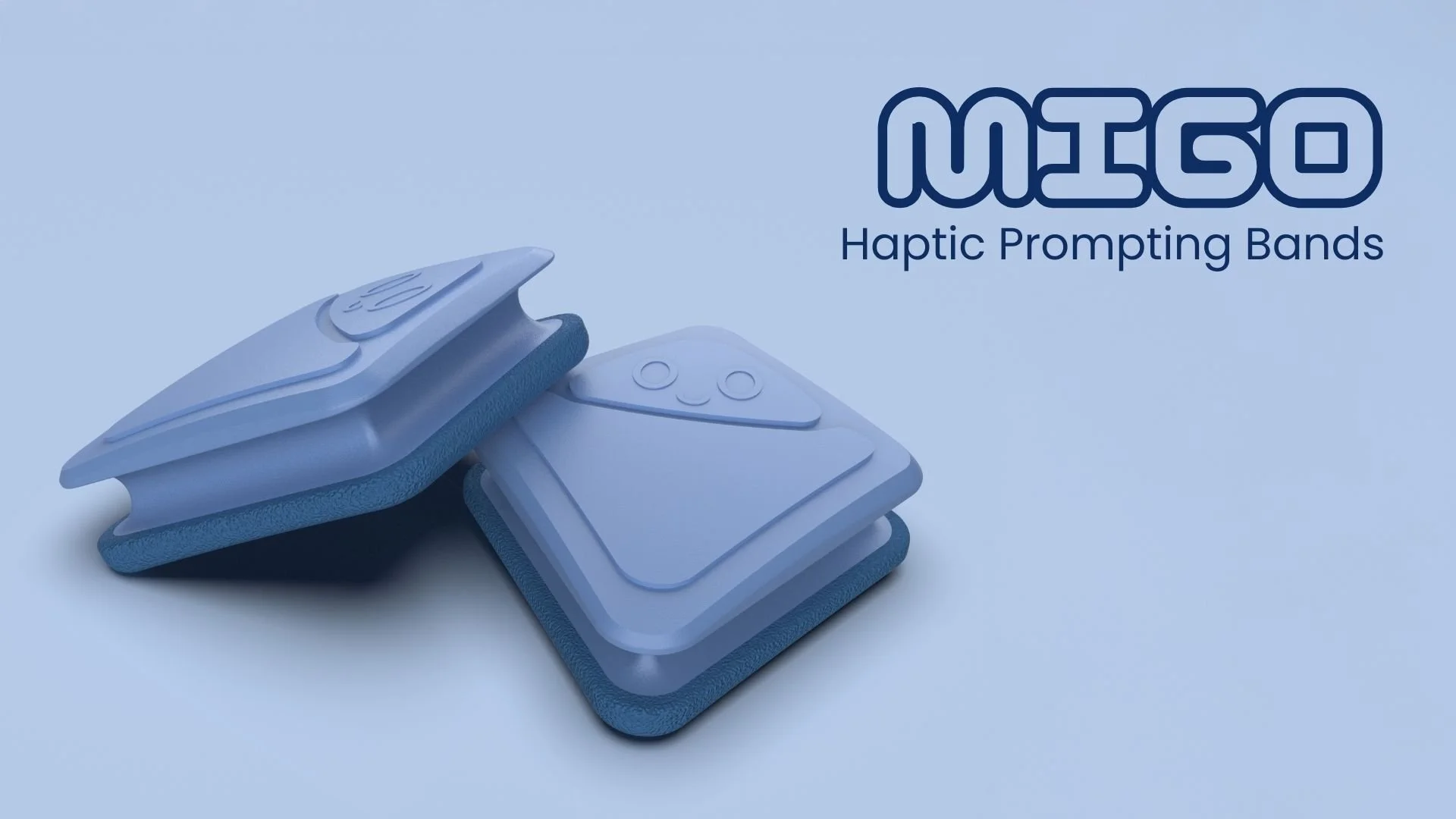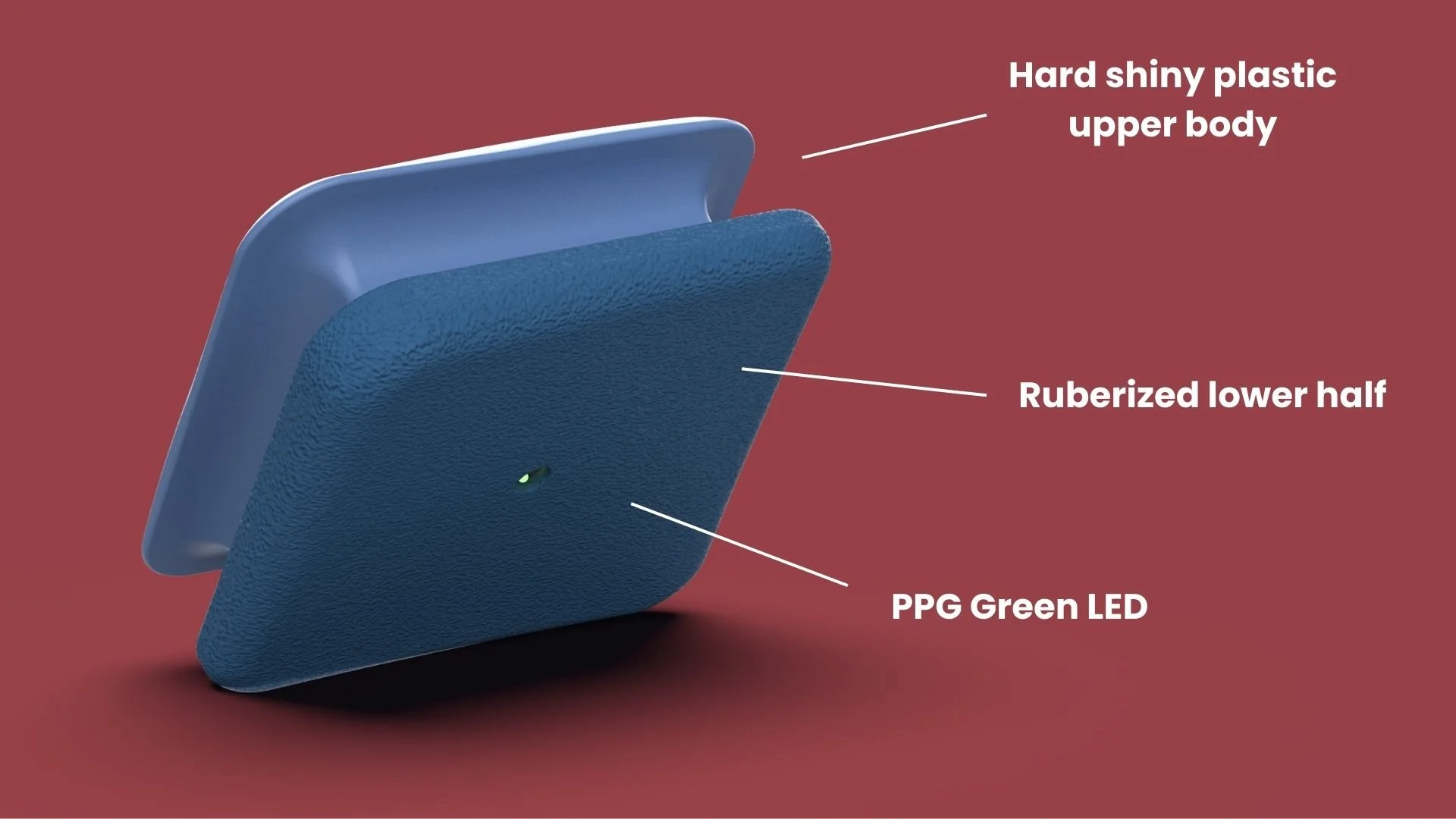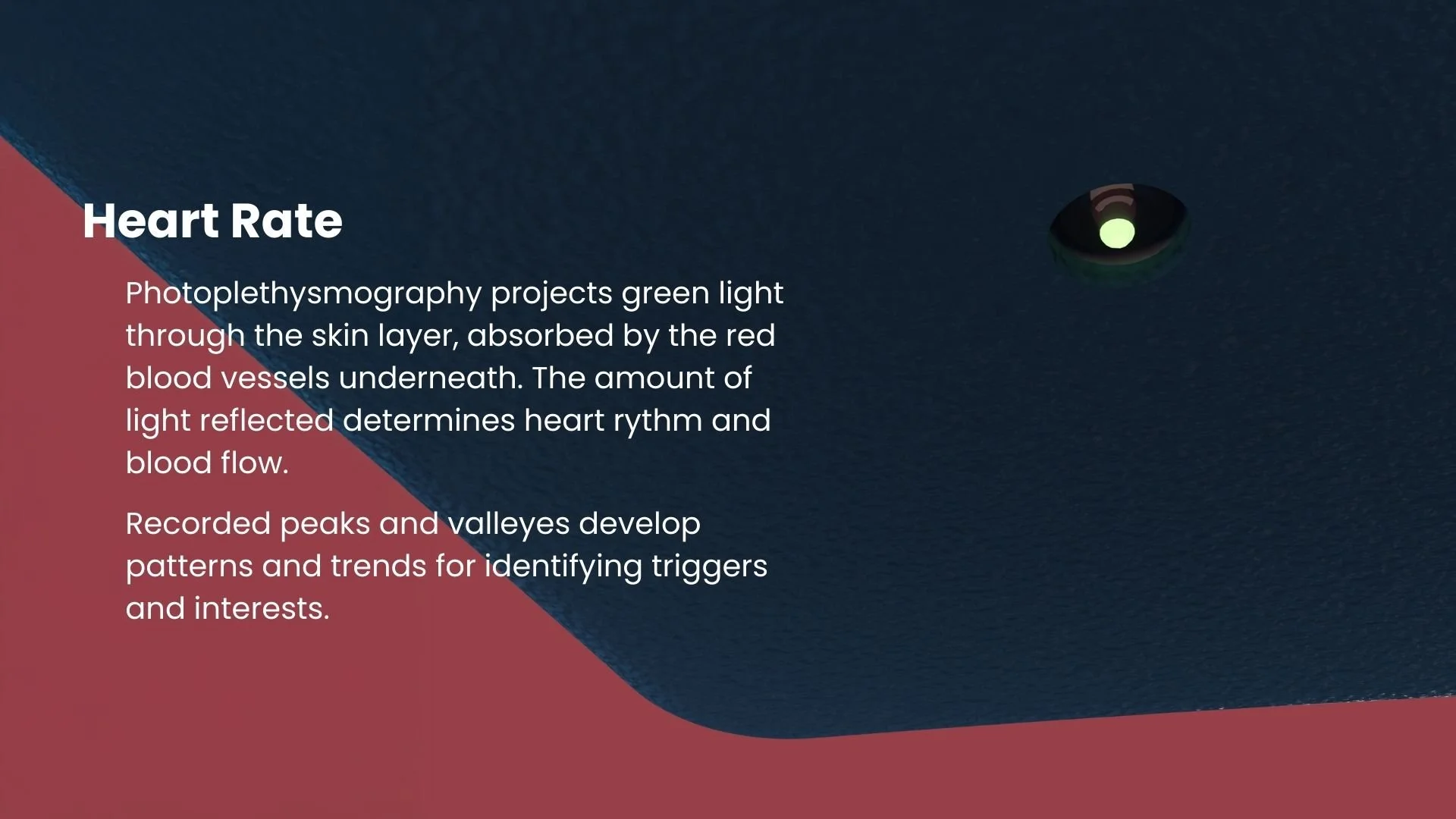a sensory prompting device for children
-
Based on extensive literary research and clinician interviews, children (ages 4-13) with neurodiversity experience highest stress during transition times. Specialists use prompting techniques to help a child prepare for changing spaces or routines, reducing stress and possibility of a triggered outburst.
However, a physical or audible prompt may not be enough or add more stress, necessitating hands-off sensory guidance. The research pinpointed MIGO’s three essential features: LED heart rate monitoring, GPS tracking, and haptic pulsing for ensured safety and effective prompting.
-
The research pointed to a wrist-wearable that facilitates seamless prompting from the caregiver to the child. The initial sketches ideated form and function, determining the band stretch around the device body for personalization and comfort.
Referencing synaptic nerves connecting (right), MIGO strengthens the child-caregiver bond through the device’s friendly face and friendship bracelet design.
-
Replacing the traditional friendship yarn, tubular silicone strings were woven in the chevron pattern. Because silicone is self-bonding, the string ends can fuse into the stretchy loop, made with dyed liquid silicone and cast in a 3D printed loop-mold.
Since they must align in the thin channel, adjustments to the device body altered the mold’s dimensions, varying the resulting loop’s thickness and elasticity. The band and device co-evolved into the optimal size, texture, and experience.
-
MIGO allows a caregiver to vibrationally prompt and notify a child for a transition without physical or verbal force, with potential for children with visual or hearing impairments.
This product integrates sensory communication into everyday life, demonstrating the prospect of a haptic network—using vibrations as language.
